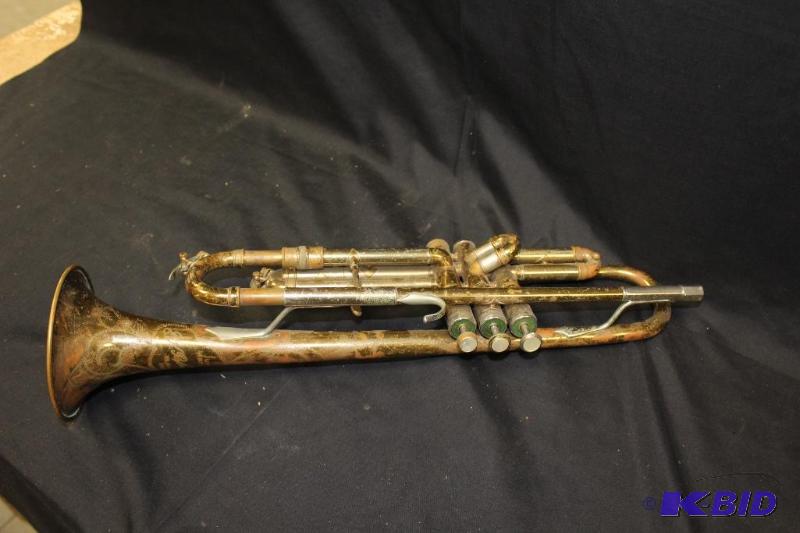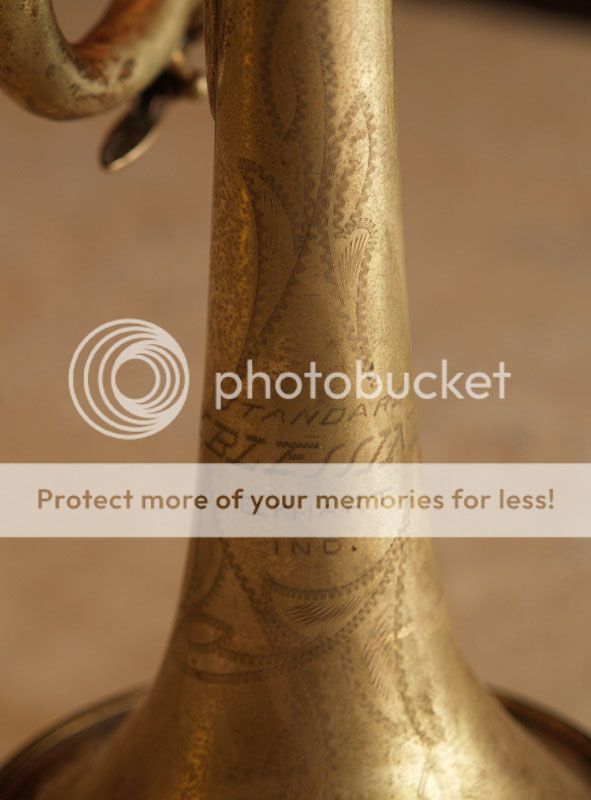- Blessing Super Artist Trumpet
- Blessing Super Artist Trumpet Serial Numbers Free
- Blessing Trumpet Models
- Blessing Super Artist Trumpet Serial Numbers Chart
- Blessing Super Artist Trumpet Serial Numbers Lookup
I just posted this excerpt from 'A Timeline of Trumpets', pages 181-182 on TH in reply to a question about a Citation, and it occurred to me it was a good fit for this new section. (Before someone objects, I'm the author. When I republish it it doesn't count as plagiarism!)

Vintage Blessing Super Artist trumpet. Serial number 780## dates this trumpet to approximately 1957. Markings on the trumpet are 'SUPER ARTIST EK BLESSING CO. 1957 York Super Custom Trumpet- Blessing Super Artist Stencil. £173.38 + £18.93 P&P. Vintage Blessing Trumpet - serial number 29626. Vintage 1950's E K Blessing Standard MDL Trumpet Serial#51785 Plays Great! BLESSING SCHOLASTIC TRUMPET in FITTED CASE. B2R1260 Blessing Trumpet. Make Offer - Blessing Super Artist Trumpet -Clifford Browns ️ Vintage. Blessing BFH-1287 French Horn BRAND NEW.
Very early Reynolds professional trumpet, serial number 1,0XX. Note the threaded tuning ring on the main tuning slide-similar to the Blessing 'Super Artist' and the early King 'Master Model' cornet-for quick-change to key of 'A.' Note the pull lines on each of the three slides (including a pull-out on the third slide) for adjusting to key. Up for sale Vintage E.K Blessing Super Artist Trumpet, 1956 Serial Number 75576. The instrument in good playable condition. All valves oiled and moves very smooth. All elbow oiled as well and easy to pull out. Sells without mouthpiece. Case has a broken zipper and we use it just protect trumpet.
Rudy’s father, J.R. Mück was an immigrant from a Moravian family that had been building brass instruments since 1875. Rudy himself had been born in Moravia in 1907, coming to the US with his family in 1911. Rudy played professionally in New York City as well as his work in the shop that opened sometime in the 1920s. The cushion-rim mouthpiece business launched around 1932, with the hand building of trumpets having already been underway as an extension of the instrument repair and customizing business. But when J.R Muck retired in 1936, Rudy set out to significantly expand as a maker.
With knowledge of the Bach design, as well as access to some of the craftsmen and all of the parts suppliers, Muck was well situated to build his “Citation” model trumpets as New York Bach clones. What is interesting is the variety of parts sources Muck employed. The valves of most appear to be from Blessing, as Bach also used on some of his horns, and the detailing of many of the casings is a stylized abstraction of the Bach appearance. Many horns feature the Bach stop rod on third with Bach posts, which to the present day are made in the Bach factory, suggesting that Bach actually supplied Muck parts at times. In the same location however, one can find distinctive Blessing posts or a third maker’s short ball posts, without any pattern other than the horns seemed to be built with what was available that day.
Blessing Super Artist Trumpet
It appears that Muck assembled horns rather than making them. Blessing played a key role as a parts supplier throughout the time Rudy Muck owned the business. There are, however, also horns, particularly the “M” series models that have strong indications of being partially or completely assembled by Monke in Germany. While a few even have distinctive Monke valve casings, most still show the same stylized Bach turning. What is interesting is that Blessing valves, Blessing posts, two different styles of valve cap, and many other elements appear mixed-in randomly from horn to horn on these otherwise strongly Monke horns. It is possible that some were stencil and some were built in New York from parts – but equally plausible that Muck was shipping Blessing and Bach parts to Germany for their supplier to use, preserving both the look, and the random hand-built feel, of their product.
Muck serial numbers have baffled all who have tried to make sense of them. Muck instruments appear with no numbers, with 4-digit numbers, with 5-digit numbers and with two groupings of 6-digit serial numbers. However, the known sale dates of many of these horns all overlap. This is particularly true after Rudy Muck sold the business to Carl Fischer around 1950. Fischer already owned JW York in Grand Rapids Michigan, and that immediately added another parts supplier to the mix. While nothing can be proven conclusively, the 4-digit sequence seems to span the duration of the Muck Company under both owners and is likely the “core” serial number sequence. The 5-digit numbers align with Blessing part numbers during the period and may have come along with the valves, or perhaps, as can be seen in a handful of obvious Artists and Super-Artist stencils, with completed horns built under contract. The first block of 6-digit numbers aligns with York serials after the Fischer sale. The second block, appear to exist primarily on some of the “M” models, which also have 4-digit numbers routinely, and may be connected to Monke, though Monke does not seem to have had a rigid numbering system for their stencil work.
Thanks to the recollections of Niles Eldredge regarding his high school trumpet, a 4-digit 1959 Citation with the more elaborate but far rarer valve caps, we know that Fischer was procuring some Muck parts in the 50s from its York operation and Mario Marcone was assembling the finished product in New York at a Fischer facility. The York sourced valves are visually indistinguishable from Blessing sourced product, but York had a long history of making precise stencil product when contracted to do so.

The development of a serial number list has been very difficult because of the lack of official records. Mr. H. N. White kept very detailed records but when the company was sold to the Seeburg Corporation all official records were destroyed. When looking up the age of your instrument, complete the following steps: (1.) Find your instruments catalog page and year that the catalog was made. Pay special attention to the small details on your instrument because most artists drawings account for unique changes and features. (2.) Compare your findings to the serial number list. Please keep in mind that most catalogs were dated on the back and should be trusted more than the serial number list.
1/01/2008 We have reevaluated the serial number list to reflect new information. The number of instruments produced in the early years 1893-1905, has been reduced. The serial number lists are NOT 100% accurate. |
Brass King Serial Numbers
| Date | Serial Number |
| 1893-1899 | 1-4,000 |
| 1900-1903 | 4,001-6,000 |
| 1904-1905 | 6,001-9,000 |
| 1905-1910 | 9,001-25,000 |
| 1910-1915 | 25,001-40,000 |
| 1915-1925 | 40,001-78,000 |
| 1925-1930 | 78,001-126,000 |
| 1930-1935 | 126,001-176,000 |
| 1935-1936 | 176,001-186,000 |
| 1936-1937 | 186,001-200,000 |
| 1937-1938 | 200,001-212,000 |
| 1938-1939 | 212,001-225,000 |
| 1939-1940 | 225,001-239,000 |
| 1940-1941 | 239,001-254,000 |
| 1941-1942 | 254,001-264,000 |
| 1942-1945 | 264,001-267,500 |
| 1945-1946 | 267,501-277,000 |
| 1946-1947 | 277,001-287,000 |
| 1947-1948 | 287,001-296,500 |
| 1948-1949 | 296,501-301,500 |
| 1949-1950 | 301,501-308,000 |
| 1950-1951 | 308,001-316,500 |
| 1951-1952 | 316,501-322,000 |
| 1952-1953 | 322,001-330,000 |
| 1953-1954 | 330,001-337,000 |
| 1954-1955 | 337,001-340,000 |
| 1955-1960 | 340,001-370,000 |
| 1960-1965 | 370,000-406,500 |
| 1965-1970 | 406,501-457,600 |

String Serial Numbers
American Standard String Bass Serial Numbers | |
| 1934 001 1935 200 1936 400 1937 800 1938 1200 1939 1600 1940 2200 1942-1946 No Production WWII 1947 Limited Production 1949 1950 1951 1952 2450 1953 2600 1954 2800 1955 3000 1956 3200 1957 3400 1958 3600 1959 3800 1960 4000 1961 4200 1962 4400 1963 4600 1964 4800 1965 5000 | 1936 001 1937 185 1938 480 1939 790 1940 1010 1941 1320 1942-1946 No Production WWII 1947-1948 No Production 1949 1400 1950 1500 1951 1600 1952 1700 1953 1800 1954 1900 1955 2000 1956 2100 1957 2200 1958 2300 1959 2400 1960 2500 1961 2600 1962 2700 1963 2800 1964 2900 1965 3090 |
Blessing Super Artist Trumpet Serial Numbers Free
Cleveland and American Standard Serial Numbers:
Blessing Trumpet Models
| Date | Serial Number |
| 1919-1930 | 1-10,000 |
| 1930-1935 | 10,000-30,000 |
| 1935-1940 | 30,000-40,000 |
| 1940-1945 | 40,000-45,000 |
| 1945-1950 | 45,000-50,000 |
| 1950-1955 | 50,000-65,000 |
| 1955-1960 | 65,000-100,000 |
| 1960-1965 | 100,000-160,000 |
| 1965-1970 | 160,000-420,000 |
Blessing Super Artist Trumpet Serial Numbers Chart
All catalog pages are property of hnwhite.com and may not be reproduced or used without written consent.
Blessing Super Artist Trumpet Serial Numbers Lookup
Copyright ©2013, The H. N. White Company LLC

All Rights Reserved.
Comments are closed.